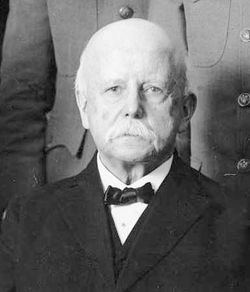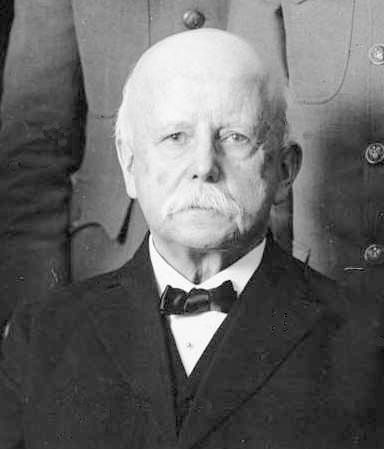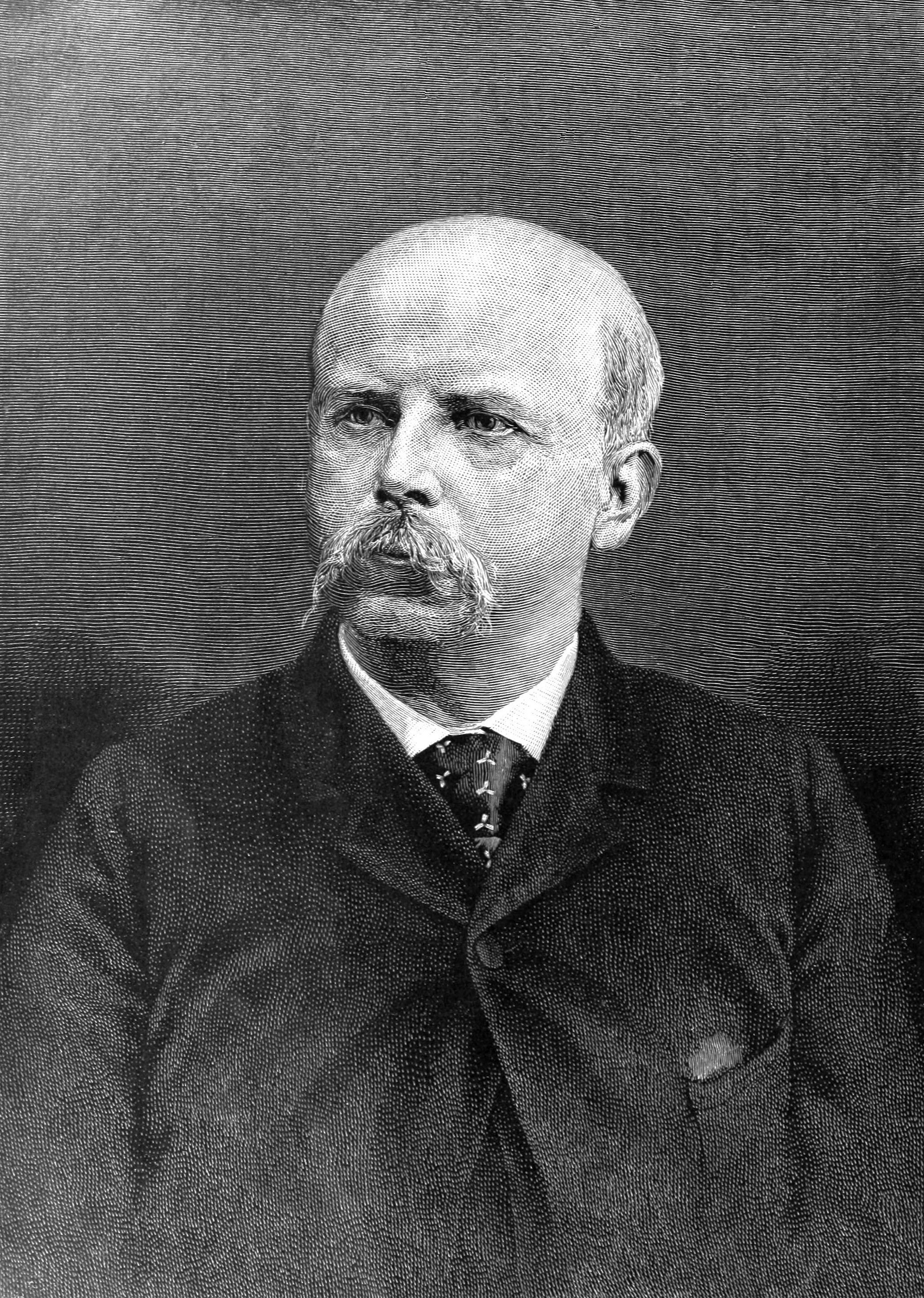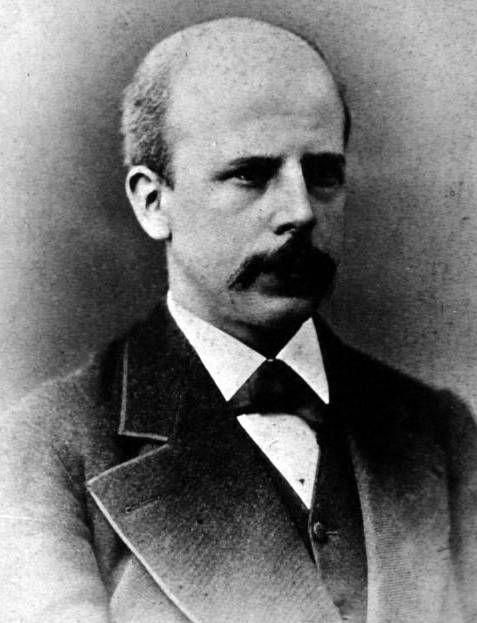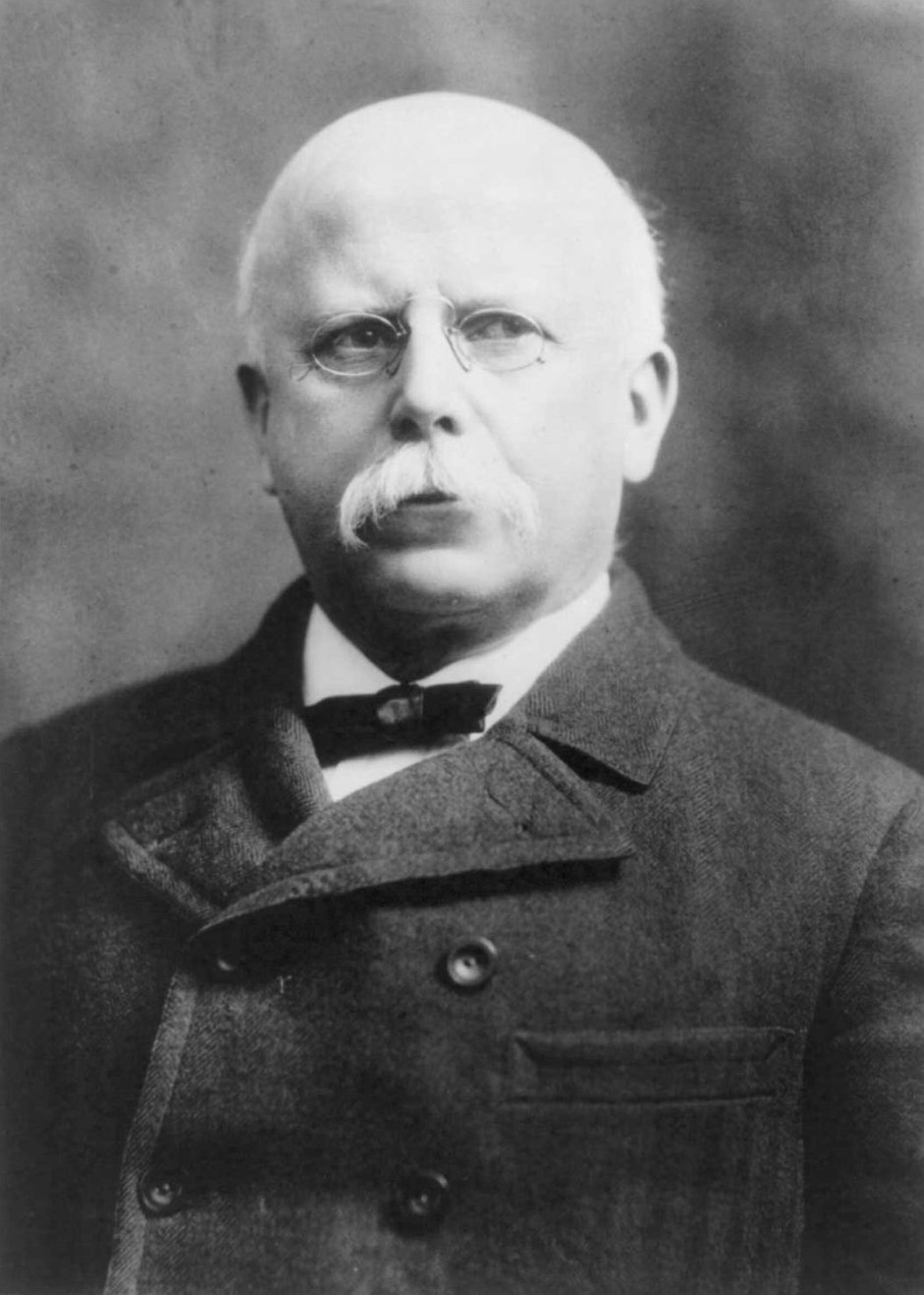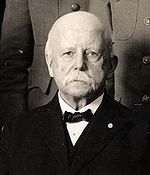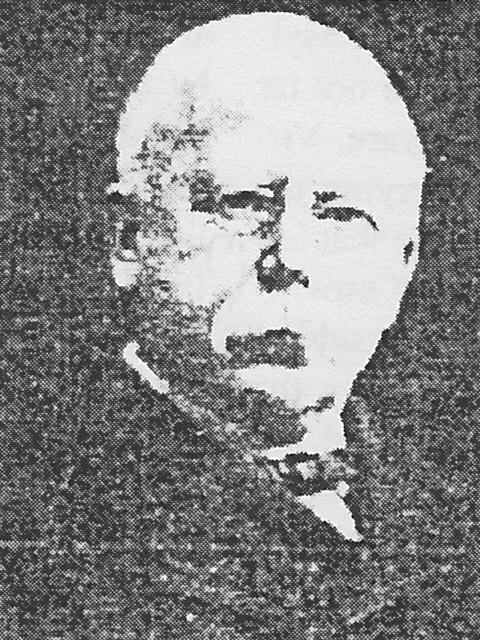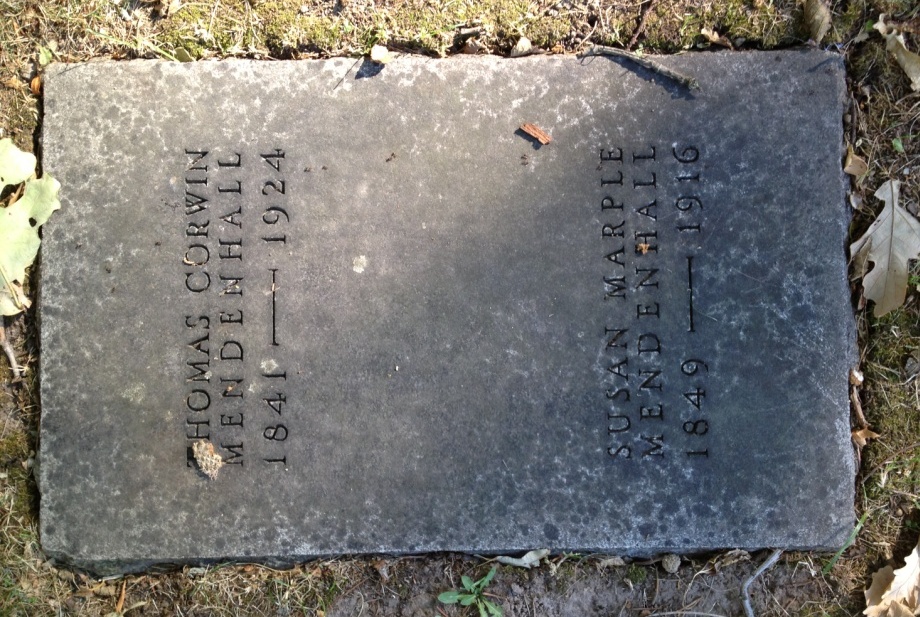Normalis degree from the National Normal University in
1861. He became well known in Ohio as an impressive
teacher and educator. J. S. Newberry, Chief Geologist of the
Survey's Second Organization, asked Mendenhall to compile
a paper on the heating powers of Ohio coals, which was
published in the Annual Report of 1870. In 1873 Mendenhall
was appointed professor of physics and mechanics at the
Ohio Agricultural and Mechanical College. Later, this school
became The Ohio State University, so Mendenhall became
the first member of the original faculty at OSU. Mendenhall
Laboratory, dedicated in 1905, is named after Professor
Mendenhall.
In 1878 he was presented the first honorary Ph.D. awarded
by The Ohio State University. Soon after, he left OSU for the
Tokyo Imperial University where he was a visiting professor
for three years. While in Tokyo has founded a
meteorological observatory and was also one of the founders
of Seismological Society of Japan.
Thomas C. Mendenhall, photo courtesy of
The Ohio State University.
Returning to Ohio in 1881, Mendenhall was instrumental in developing the Ohio State
Meteorological Service. He devised a system of weather signals for display on railroad trains.
This method was used throughout the United States and Canada.
In 1884 he became professor at the U.S. Signal Corps, where he was the first to establish stations
in the United States for the systematic observation of earthquake phenomena. He left the U.S.
Signal Corps in 1886 to take over the duties as president of Rose Polytechnic Institute in Terre
Haute, Indiana.
In 1889 he was named superintendent of the
U.S. Coast and Geodetic Survey. During his
time there he was responsible for determining
the boundary between Alaska and Canada. In
recognition of this accomplishment a valley and
glacier near Juneau were named the
"Mendenhall Valley and the Mendenhall
Glacier" in 1892.
Mendenhall invented the portable Mendenhall Gravimeter in 1890 while he was superintendent
of the U.S. Coast and Geodetic Survey, and at that time it provided the most accurate relative
measurements of the local gravitational field of the Earth. The pendulum was more regular than
the most accurate clocks of the era, and was used by Albert A. Michelson to measure the speed
of light, for which he won a Nobel Prize in 1907. An early model of the1890s Mendenhall
Gravimeter is on display at the Smithsonian in Washington, D.C.
Mendenhall served as president of the Worcester Polytechnic Institute from 1894 until 1901,
then headed to Europe for eleven years.
In 1919 he was appointed to the board of trustees of the Ohio State University and served in that
capacity until his death in 1924.
It is interesting to note that as an OSU trustee he tried to limit the capacity of
the new Ohio Stadium to 45,000 seats. He felt the university could never fill the
design capacity of 63,000 seats!"
Written by Madge Fitak, Ohio Geological Survey.
Normalis degree from the National Normal University in
1861. He became well known in Ohio as an impressive
teacher and educator. J. S. Newberry, Chief Geologist of the
Survey's Second Organization, asked Mendenhall to compile
a paper on the heating powers of Ohio coals, which was
published in the Annual Report of 1870. In 1873 Mendenhall
was appointed professor of physics and mechanics at the
Ohio Agricultural and Mechanical College. Later, this school
became The Ohio State University, so Mendenhall became
the first member of the original faculty at OSU. Mendenhall
Laboratory, dedicated in 1905, is named after Professor
Mendenhall.
In 1878 he was presented the first honorary Ph.D. awarded
by The Ohio State University. Soon after, he left OSU for the
Tokyo Imperial University where he was a visiting professor
for three years. While in Tokyo has founded a
meteorological observatory and was also one of the founders
of Seismological Society of Japan.
Thomas C. Mendenhall, photo courtesy of
The Ohio State University.
Returning to Ohio in 1881, Mendenhall was instrumental in developing the Ohio State
Meteorological Service. He devised a system of weather signals for display on railroad trains.
This method was used throughout the United States and Canada.
In 1884 he became professor at the U.S. Signal Corps, where he was the first to establish stations
in the United States for the systematic observation of earthquake phenomena. He left the U.S.
Signal Corps in 1886 to take over the duties as president of Rose Polytechnic Institute in Terre
Haute, Indiana.
In 1889 he was named superintendent of the
U.S. Coast and Geodetic Survey. During his
time there he was responsible for determining
the boundary between Alaska and Canada. In
recognition of this accomplishment a valley and
glacier near Juneau were named the
"Mendenhall Valley and the Mendenhall
Glacier" in 1892.
Mendenhall invented the portable Mendenhall Gravimeter in 1890 while he was superintendent
of the U.S. Coast and Geodetic Survey, and at that time it provided the most accurate relative
measurements of the local gravitational field of the Earth. The pendulum was more regular than
the most accurate clocks of the era, and was used by Albert A. Michelson to measure the speed
of light, for which he won a Nobel Prize in 1907. An early model of the1890s Mendenhall
Gravimeter is on display at the Smithsonian in Washington, D.C.
Mendenhall served as president of the Worcester Polytechnic Institute from 1894 until 1901,
then headed to Europe for eleven years.
In 1919 he was appointed to the board of trustees of the Ohio State University and served in that
capacity until his death in 1924.
It is interesting to note that as an OSU trustee he tried to limit the capacity of
the new Ohio Stadium to 45,000 seats. He felt the university could never fill the
design capacity of 63,000 seats!"
Written by Madge Fitak, Ohio Geological Survey.
Family Members
Sponsored by Ancestry
Advertisement
Records on Ancestry
Advertisement
